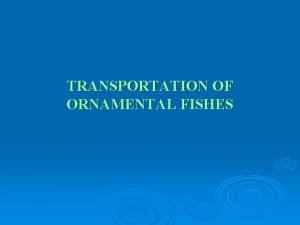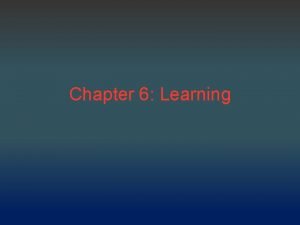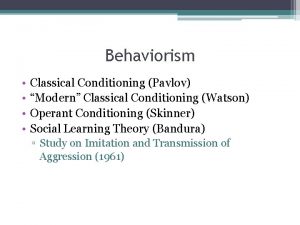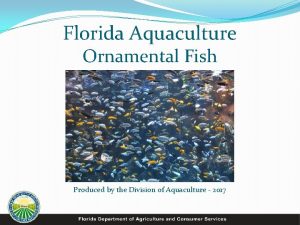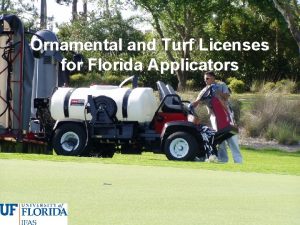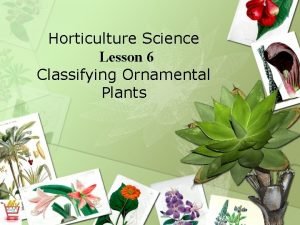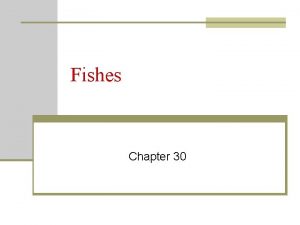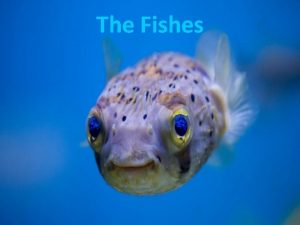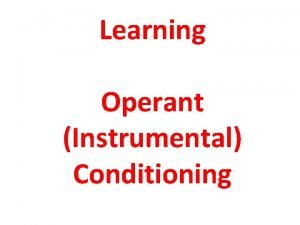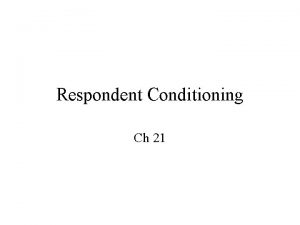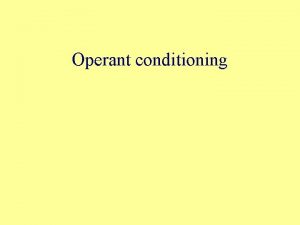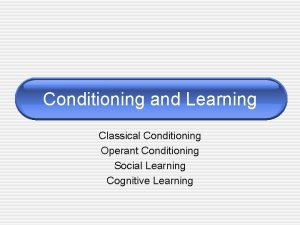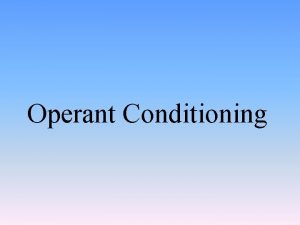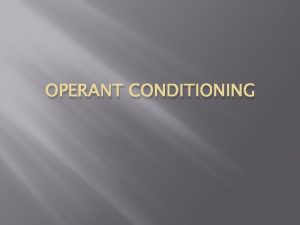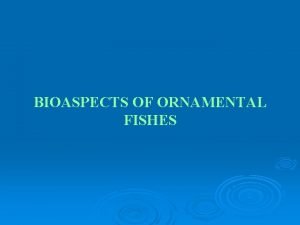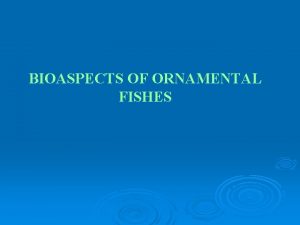TRANSPORTATION OF ORNAMENTAL FISHES Conditioning of ornamental fishes













- Slides: 13

TRANSPORTATION OF ORNAMENTAL FISHES

Conditioning of ornamental fishes prior to packing Before transporting seeds to long distances in open or closed systems of transport, ornamental fishes should be conditioned in order to rid them off excreta and to ensure them to subsist in a restricted area in which they are inevitable liable to be subjected during transport.

Conditioning of ornamental fishes prior to packing – Contd… The most common method of conditioning is to store ornamental fishes in a cloth ‘hapa’ in ponds, or in still part of river or in tanks. The depth of water for a conditioning enclosure is to be maintained to a minimum of 30 -35 cm. The period of conditioning depends on the size and health of the spawn, fry and fingerlings. Clean and natural water at a temperature of 20 - 23 C is suitable for conditioning of ornamental fishes.

Method of packing in closed systems In this system, polythene bags of various sizes are used (40 x 25 cm; 40 x 18 cm; 60 x 30 cm). Polythene bags of 33 -litre capacity measuring 74 x 46 cm and made of 0. 0625 cm gauge material are widely used for transportation of ornamental fishes. In this method, the bag is first filled with 1/3 of its capacity (vol. of water and oxygen would be 1: 3 ratio) with water (6 -7 litres). Then, the bag is inflated with oxygen upto about 2/3 from an oxygen cylinder.

Method of packing in closed systems – Contd… The upper 10 -15 cm of the bag is twisted bend and tied securely with string with leak proof knot, which will not open by itself during transport. It is generally advisable to keep each plastic bag individually in containers of cardboard or metal or wooden boxes to prevent leakage by inadvertent damage to the bag during transport. The mortality is found to maximum of 5%.

Preparing of fishes Acclimated for 48 hrs. Fishes are starved during transport § Well aerated water dissolved with the following chemicals: § Ø Ø 5% Methylene blue (10 drops in 50 lit. of water) 0. 01% of common salt solution (10 mg of sodium chloride dissolved in 100 ml of water) Epson salt (2 teaspoonful of this salt dissolved in 50 lit. ) Tetracycline (500 mg dissolved in 50 lit. of water)

Preparing of fishes – Contd… Previously well-fed and 4 hour starved fish could withstand rigorous packing and air transport. Tranquilizers like quinaldine or paraldehyde can be used in mild concentration (see table) to reduce the activity of the fishes.


Methods of sedation Prior to anaesthetization and transport, healthy ornamental fishes are collected from the rearing tank and are kept under starvation for 24 hours in aerated waters. The desired concentrations of anesthesia are prepared well in advance for use for sedating the fish under transport.

Basis for estimating number of seedfish for transportation The number of seedfish to be put in a closed and oxygen packed container for transport may vary according to the type and size of the seedfish, mode of transport, duration of transport and the environmental temperature.

Basis for estimating number of seedfish for transportation – Contd… A simple formula to find out the number of seedfish for transportation in containers with water but without oxygen is given below. (DO – 2) x V N= Cxh Where, DO = dissolved oxygen in ambient water in ppm V = volume of water in litre C = rate of oxygen consumption by individual seedfish in mg/kg/hr H = period of transportation in hours

Basis for estimating number of seedfish for transportation – Contd… For example, if the water volume is 30 litres and its ambient oxygen content is 8 ppm, weight of the individual seedfish, 1 mg, rate of oxygen consumption 200 mg/kg/hr, and the period of transport six house, the number of seedfish for transportation will be (8 – 2 x 30) N= = 150 0. 2 x 6

 Transportation of ornamental fishes
Transportation of ornamental fishes Classical conditioning and operant conditioning
Classical conditioning and operant conditioning Difference between classical and operant conditioning
Difference between classical and operant conditioning Operant vs. classical conditioning
Operant vs. classical conditioning Classical and operant conditioning differences
Classical and operant conditioning differences Classical conditioning vs operant conditioning
Classical conditioning vs operant conditioning Little albert experiment summary
Little albert experiment summary Shaping in operant conditioning
Shaping in operant conditioning Operant conditioning classical conditioning
Operant conditioning classical conditioning Three-phase model of operant conditioning
Three-phase model of operant conditioning Different types of reinforcement schedules
Different types of reinforcement schedules Cichlid farm florida
Cichlid farm florida Limited lawn and ornamental license florida
Limited lawn and ornamental license florida Classifying ornamental plants answers
Classifying ornamental plants answers
